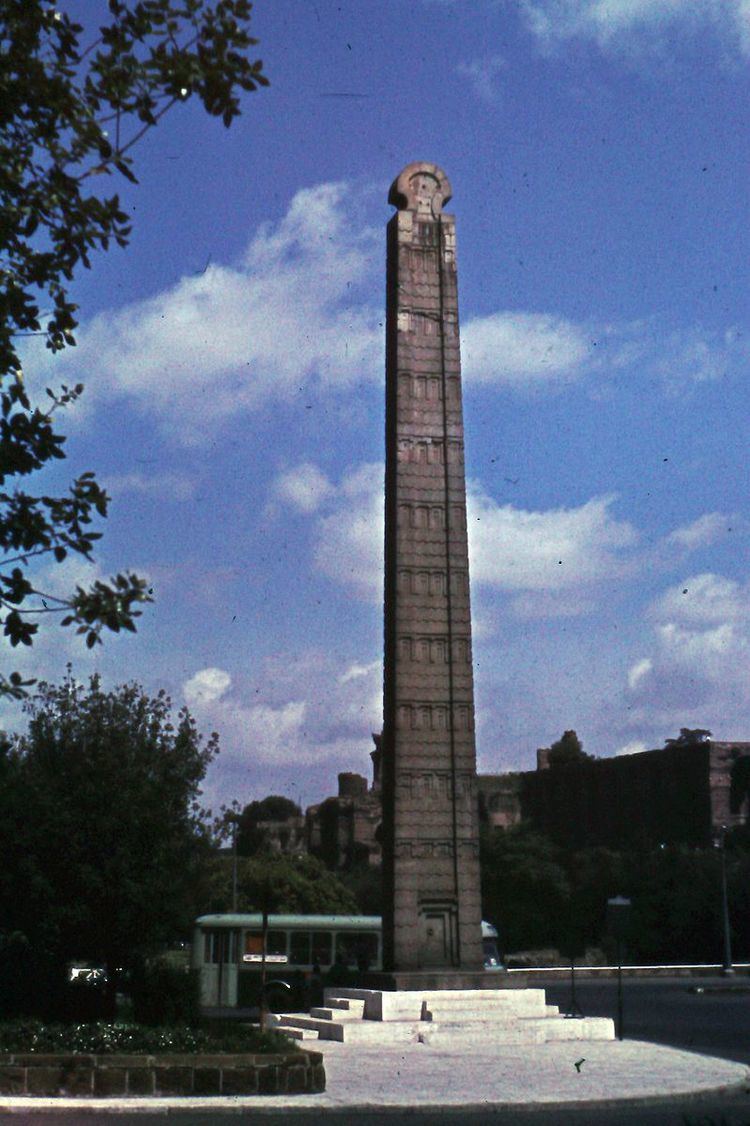 | ||
Ethiopia offers a greater richness in archaeological finds and historical buildings than any other country in Sub-Saharan Africa (including Sudan). The country has several UNESCO world heritage sites related to archaeology which include: Axum (one of the oldest continuously inhabited places in Africa), the Awash Valley where Lucy (Australopithecus) a hominin who lived around 3.2 million years ago was discovered, and Tiya (archaeological site) where Middle Stone Age tools and megaliths have been found.
Ethiopia is well known for its significant fossil-bearing beds which have borne some of the oldest and most complete fossil hominids. One well known example is Lucy. Her hominid species Australopithecus afarensis is named after the Afar Ethiopian region where it was discovered. Other discoveries are still being made. Around 2000, archaeologists uncovered the ruins of the legendary ancient Islamic kingdom of Shoa, that included evidence of a large urban settlement as well as a large mosque.
In April 2005, the Obelisk of Axum, one of Ethiopia's religious and historical treasures, was returned to Ethiopia by Italy.
